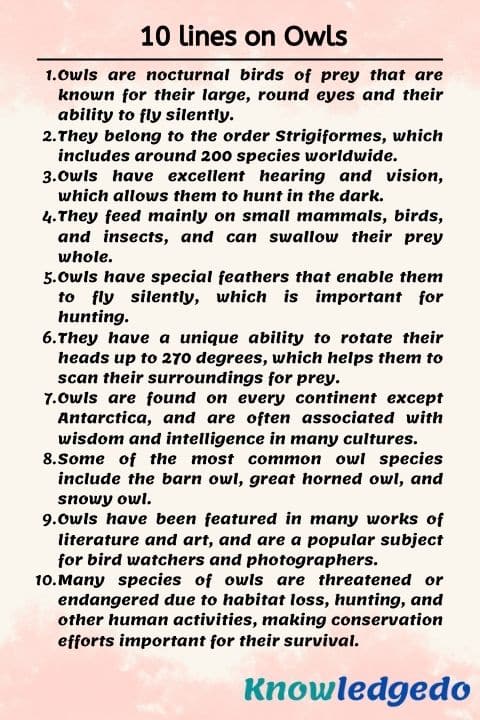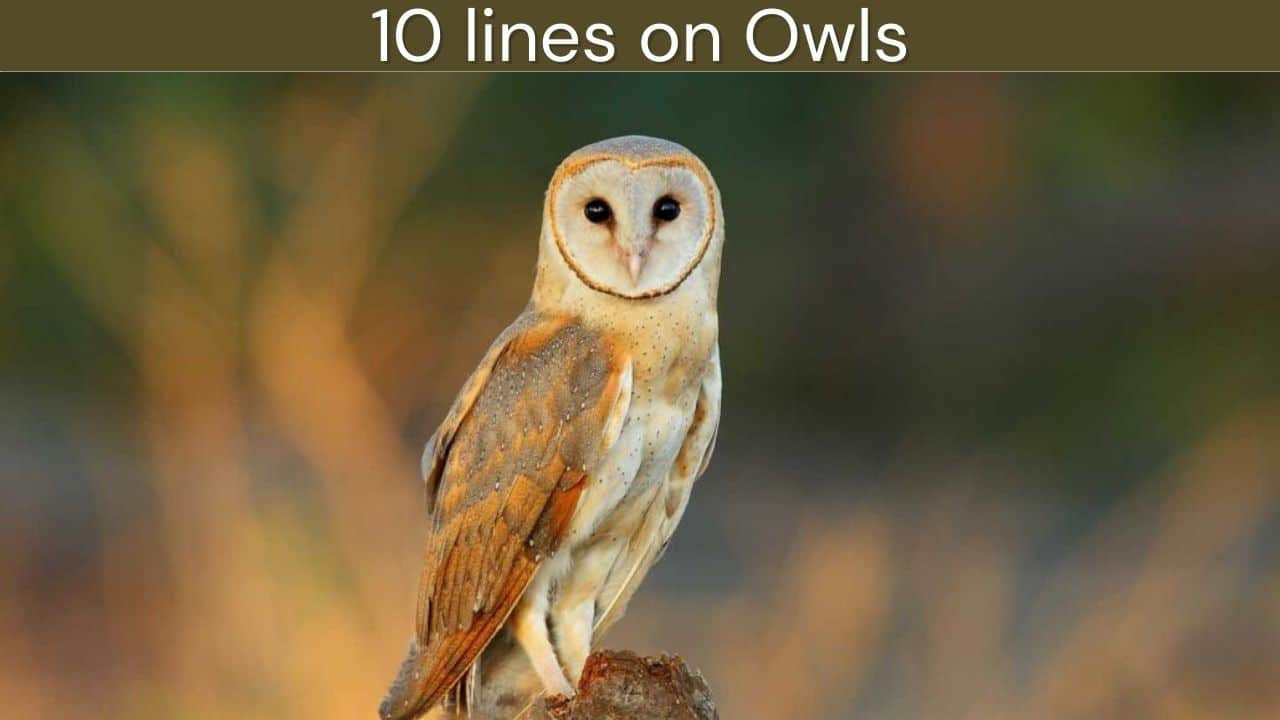Today, we are sharing 10 lines on Owls in English. This article can help students who are looking for information about 10 lines on Owls. This Lines is very simple and easy to remember. The level of these Lines is moderate so any student can write on this topic.
This article is generally useful for class 1,class 2,class 3,class 4,class 5,class 6,class 7,class 8,class 9,class 10,class 11,class 12
10 lines on Owls
1) Owls are nocturnal birds of prey that are known for their large, round eyes and their ability to fly silently.
2) They belong to the order Strigiformes, which includes around 200 species worldwide.
3) Owls have excellent hearing and vision, which allows them to hunt in the dark.
4) They feed mainly on small mammals, birds, and insects, and can swallow their prey whole.
5) Owls have special feathers that enable them to fly silently, which is important for hunting.
6) They have a unique ability to rotate their heads up to 270 degrees, which helps them to scan their surroundings for prey.
7) Owls are found on every continent except Antarctica and are often associated with wisdom and intelligence in many cultures.
8) Some of the most common owl species include the barn owl, great horned owl, and snowy owl.
9) Owls have been featured in many works of literature and art, and are a popular subject for bird watchers and photographers.
10) Many species of owls are threatened or endangered due to habitat loss, hunting, and other human activities, making conservation efforts important for their survival.

5 lines on Owls
1) Owls are nocturnal birds of prey that hunt mainly at night.
2) They have large eyes and excellent hearing, which helps them to find their prey.
3) Owls can rotate their heads almost all the way around, giving them a wide field of view.
4) They are often associated with wisdom and intelligence in many cultures.
5) There are around 200 species of owls worldwide, each with unique characteristics and adaptations.
FAQ
Answer: Owls are carnivores that mainly feed on small mammals, birds, and insects. They swallow their prey whole and regurgitate indigestible parts such as bones and fur in the form of pellets.
Answer: Owls have excellent night vision due to their large eyes and a high number of light-sensitive cells called rods. They also have special adaptations such as a reflective layer in the back of their eyes that helps to enhance their night vision.
Answer: Owls play an important role in the ecosystem by controlling populations of rodents and other small animals. They also help to maintain the balance of predator and prey populations in their habitats. Additionally, owls serve as indicators of the health of their ecosystems and can help to monitor environmental changes.
